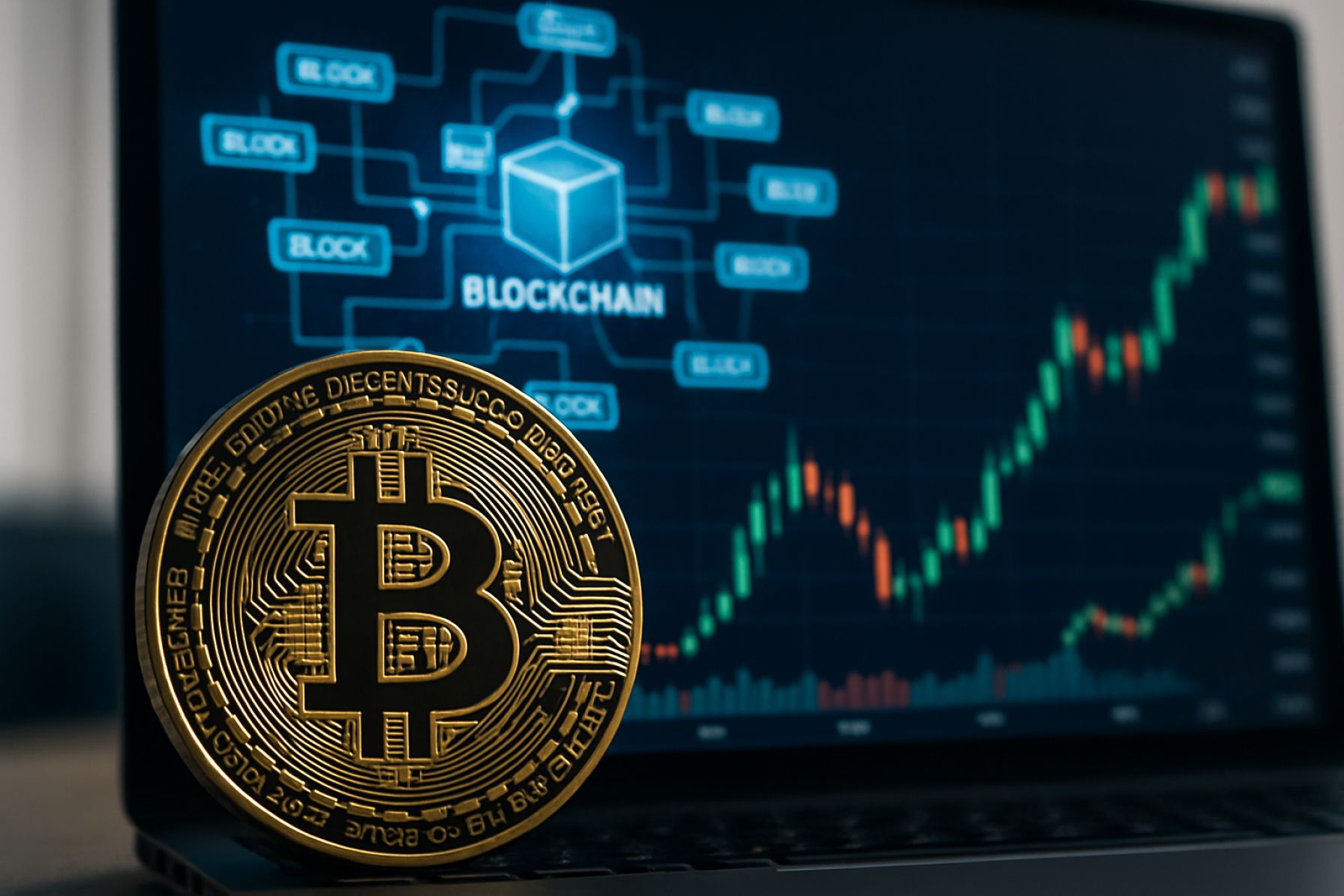Web3 Blockchain Exchange Infrastructure Market Report 2025: Unveiling Key Growth Drivers, Technology Shifts, and Competitive Dynamics. Explore Data-Backed Forecasts, Regional Trends, and Strategic Opportunities Shaping the Next 5 Years.
- Executive Summary & Market Overview
- Key Technology Trends in Web3 Exchange Infrastructure
- Competitive Landscape and Leading Players
- Market Growth Forecasts 2025–2030: CAGR, Volume, and Value Projections
- Regional Analysis: Adoption and Investment Hotspots
- Future Outlook: Emerging Use Cases and Strategic Roadmaps
- Challenges and Opportunities: Regulation, Security, and Scalability
- Sources & References
Executive Summary & Market Overview
The Web3 blockchain exchange infrastructure market in 2025 is positioned at the intersection of rapid technological innovation and evolving regulatory landscapes. Web3, defined by its decentralized architecture and user-centric ethos, is fundamentally reshaping how digital assets are exchanged, stored, and managed. Unlike traditional Web2 exchanges, Web3 platforms leverage blockchain protocols, smart contracts, and decentralized applications (dApps) to facilitate peer-to-peer trading, reduce reliance on intermediaries, and enhance transparency.
The global market for Web3 blockchain exchange infrastructure is projected to experience robust growth through 2025, driven by increasing adoption of decentralized finance (DeFi), the proliferation of non-fungible tokens (NFTs), and the expansion of tokenized real-world assets. According to Grand View Research, the broader blockchain technology market is expected to reach $1.43 trillion by 2030, with exchange infrastructure representing a significant and growing segment. The rise of decentralized exchanges (DEXs) such as Uniswap and SushiSwap, alongside hybrid and cross-chain solutions, is accelerating the shift from centralized to decentralized trading models.
Key market drivers in 2025 include heightened demand for self-custody solutions, increased regulatory scrutiny of centralized exchanges, and the maturation of layer-2 scaling technologies. Innovations in zero-knowledge proofs, multi-chain interoperability, and on-chain governance are enabling exchanges to offer faster, more secure, and cost-effective trading experiences. Major infrastructure providers such as Polygon, Chainlink Labs, and Consensys are at the forefront of developing scalable protocols and middleware that underpin next-generation exchange platforms.
Despite these advancements, the market faces challenges related to regulatory uncertainty, security vulnerabilities, and user onboarding complexity. Jurisdictions such as the European Union and the United States are actively shaping policy frameworks that will impact the operation and growth of Web3 exchanges (European Parliament). As a result, compliance, Know Your Customer (KYC), and Anti-Money Laundering (AML) solutions are becoming integral to infrastructure offerings.
In summary, the Web3 blockchain exchange infrastructure market in 2025 is characterized by dynamic growth, technological innovation, and a shifting regulatory environment. Market participants that can balance decentralization, security, and compliance are poised to capture significant value as the digital asset ecosystem continues to evolve.
Key Technology Trends in Web3 Exchange Infrastructure
The landscape of Web3 blockchain exchange infrastructure is rapidly evolving in 2025, driven by a convergence of technological advancements and shifting market demands. At its core, Web3 exchange infrastructure refers to the decentralized, blockchain-based systems that facilitate the trading, settlement, and custody of digital assets without reliance on centralized intermediaries. This paradigm shift is underpinned by several key technology trends that are shaping the future of digital asset exchanges.
One of the most significant trends is the maturation of cross-chain interoperability protocols. Solutions such as Polkadot’s parachains and Cosmos’ Inter-Blockchain Communication (IBC) protocol are enabling seamless asset transfers and data exchange across disparate blockchains, reducing fragmentation and enhancing liquidity across the ecosystem. This interoperability is critical for exchanges aiming to offer a broader range of assets and services, and is being actively adopted by leading platforms (Polkadot, Cosmos).
Another major trend is the rise of decentralized exchange (DEX) aggregators and hybrid models. DEX aggregators leverage smart contracts to source liquidity from multiple decentralized venues, optimizing trade execution and minimizing slippage for users. Meanwhile, hybrid exchanges are blending the user experience and compliance features of centralized exchanges with the transparency and security of decentralized protocols. This approach is exemplified by platforms like 1inch and dYdX, which are gaining traction among both retail and institutional participants.
Zero-knowledge proofs (ZKPs) and other privacy-preserving technologies are also being integrated into exchange infrastructure to address concerns around transaction confidentiality and regulatory compliance. ZK-rollups, in particular, are enabling high-throughput, low-cost trading while maintaining the security guarantees of underlying blockchains. Projects such as zkSync and StarkWare are at the forefront of this movement, with several exchanges piloting ZK-based solutions in 2025.
Finally, the adoption of institutional-grade custody and compliance solutions is accelerating, as regulatory clarity improves in key jurisdictions. Advanced multi-party computation (MPC) wallets and on-chain analytics tools are being integrated to meet the needs of professional traders and institutional investors, as highlighted in recent reports by Chainalysis and Fireblocks.
Collectively, these technology trends are driving the evolution of Web3 exchange infrastructure, making it more interoperable, secure, and accessible for a global user base in 2025.
Competitive Landscape and Leading Players
The competitive landscape of the Web3 blockchain exchange infrastructure market in 2025 is characterized by rapid innovation, strategic partnerships, and a clear delineation between established incumbents and agile new entrants. As decentralized finance (DeFi) and non-custodial trading models gain traction, the infrastructure supporting these exchanges has become a focal point for both venture capital and enterprise investment.
Leading players in this space include both decentralized protocol developers and infrastructure providers. Consensys continues to be a dominant force, leveraging its MetaMask wallet and Infura node infrastructure to underpin a significant portion of Web3 exchange activity. Chainalysis and Fireblocks have established themselves as critical providers of security, compliance, and custody solutions, which are increasingly integrated into exchange backends to meet regulatory and institutional requirements.
On the protocol side, Uniswap Labs remains the leading decentralized exchange (DEX) protocol, with its v4 iteration introducing hooks and customizable liquidity pools, further cementing its position as the backbone for permissionless trading. 0x Labs and Balancer continue to innovate in aggregation and automated market making, respectively, offering infrastructure that powers both standalone DEXs and hybrid exchange models.
Centralized exchanges are also investing heavily in Web3 infrastructure. Coinbase has expanded its developer platform, Base, to facilitate on-chain trading and interoperability, while Binance is integrating more decentralized features into its ecosystem, blurring the lines between CEX and DEX models.
- Interoperability: Projects like Polygon and Polygon zkEVM are leading in Layer 2 scaling and cross-chain compatibility, which are essential for exchange infrastructure scalability and user experience.
- Security: Fireblocks and Chainalysis are setting industry standards for secure asset transfer and compliance monitoring.
- Liquidity Aggregation: 1inch Network and Matcha (by 0x) are prominent in providing liquidity aggregation services, optimizing trade execution across multiple DEXs.
The market is expected to see further consolidation as regulatory clarity emerges and institutional adoption accelerates. Strategic alliances between infrastructure providers and exchange operators are likely to shape the next phase of growth, with a focus on scalability, compliance, and seamless user experience.
Market Growth Forecasts 2025–2030: CAGR, Volume, and Value Projections
The Web3 blockchain exchange infrastructure market is poised for robust expansion between 2025 and 2030, driven by increasing adoption of decentralized finance (DeFi), tokenization of assets, and the proliferation of non-custodial trading platforms. According to projections by Grand View Research, the broader blockchain technology market is expected to register a compound annual growth rate (CAGR) of approximately 68% from 2024 to 2030, with Web3-specific infrastructure anticipated to outpace this average due to its foundational role in next-generation digital asset exchanges.
Market volume is forecasted to surge as institutional and retail participants seek more transparent, secure, and interoperable trading environments. Statista estimates that the total value locked (TVL) in DeFi protocols—an important proxy for Web3 exchange activity—will exceed $500 billion by 2025, with a projected TVL surpassing $1.2 trillion by 2030. This growth is underpinned by the rapid evolution of layer-2 scaling solutions, cross-chain bridges, and decentralized identity frameworks, all of which are integral to Web3 exchange infrastructure.
In terms of market value, MarketsandMarkets projects that the global blockchain market will reach $94 billion by 2027, with a significant share attributed to exchange infrastructure. Extrapolating from current trends and the increasing share of decentralized exchanges (DEXs) in global crypto trading volumes, the Web3 blockchain exchange infrastructure segment is expected to achieve a market value of $30–$40 billion by 2030.
- CAGR (2025–2030): Estimated at 35–40% for Web3 exchange infrastructure, outpacing traditional centralized exchange growth rates.
- Volume: Projected to reach over $1 trillion in annualized trading volume by 2030, as per The Block data trends.
- Value: Market capitalization of Web3 exchange infrastructure providers and protocols is expected to grow in tandem with DeFi TVL and tokenized asset adoption.
Key growth drivers include regulatory clarity in major markets, integration of real-world assets, and the maturation of on-chain governance mechanisms. However, scalability, security, and interoperability challenges remain critical factors influencing the pace and sustainability of market expansion through 2030.
Regional Analysis: Adoption and Investment Hotspots
The global landscape for Web3 blockchain exchange infrastructure in 2025 is marked by pronounced regional disparities in adoption rates, investment flows, and regulatory approaches. Key hotspots have emerged, driven by a combination of technological readiness, supportive policy environments, and robust venture capital ecosystems.
Asia-Pacific continues to lead in both adoption and investment. Countries such as Singapore and Japan have established themselves as regional hubs, benefiting from progressive regulatory frameworks and government-backed innovation initiatives. Singapore, in particular, has attracted significant foreign direct investment into Web3 infrastructure, with several major exchanges and DeFi platforms establishing regional headquarters there. According to KPMG, Singapore saw over $1.2 billion in blockchain and crypto-related investments in 2024, a trend expected to accelerate in 2025.
North America remains a powerhouse, with the United States at the forefront of both technological development and capital deployment. The presence of established players, such as Coinbase and Kraken, alongside a vibrant startup ecosystem, has fostered rapid innovation in exchange infrastructure. However, regulatory uncertainty—particularly around the classification of digital assets—continues to influence investment patterns. Despite this, venture funding for Web3 infrastructure in the U.S. exceeded $3.5 billion in 2024, according to CB Insights.
Europe is characterized by a harmonizing regulatory environment, notably with the implementation of the Markets in Crypto-Assets (MiCA) regulation. Countries like Germany and France are emerging as key nodes for institutional adoption and infrastructure investment. The European Union’s focus on compliance and consumer protection has attracted institutional players, with EU Blockchain Observatory & Forum reporting a 40% year-on-year increase in blockchain infrastructure investments in 2024.
- Middle East: The UAE, especially Abu Dhabi Global Market and Dubai International Financial Centre, is rapidly positioning itself as a Web3 hub, leveraging regulatory sandboxes and tax incentives.
- Latin America: Brazil and Argentina are seeing increased adoption, driven by demand for decentralized financial services amid macroeconomic volatility, as noted by Chainalysis.
In summary, 2025’s Web3 blockchain exchange infrastructure landscape is shaped by regional leaders who combine regulatory clarity, investment incentives, and technological innovation, setting the pace for global adoption.
Future Outlook: Emerging Use Cases and Strategic Roadmaps
Looking ahead to 2025, the future of Web3 blockchain exchange infrastructure is poised for significant transformation, driven by both technological innovation and evolving regulatory landscapes. As decentralized finance (DeFi) matures, exchanges are expected to move beyond simple token swaps, enabling a broader array of financial instruments and services. This includes the integration of real-world assets (RWAs) such as tokenized securities, real estate, and commodities, which are anticipated to become increasingly accessible through compliant, on-chain marketplaces. According to Consensys, the tokenization of RWAs could unlock trillions in liquidity, with exchanges serving as the primary gateways for these assets.
Another emerging use case is the rise of cross-chain interoperability. In 2025, leading infrastructure providers are expected to implement advanced protocols that facilitate seamless asset transfers and data exchange across multiple blockchains. This will address current fragmentation issues and enable users to access liquidity pools and trading opportunities regardless of the underlying network. Chainalysis projects that cross-chain bridges and interoperability solutions will be critical for the next wave of user adoption, particularly as institutional players demand unified access to diverse digital assets.
Strategically, exchanges are developing roadmaps that prioritize security, compliance, and user experience. With regulatory scrutiny intensifying globally, infrastructure providers are investing in robust identity verification, anti-money laundering (AML) systems, and transparent governance mechanisms. Binance and Coinbase have both announced initiatives to enhance compliance frameworks and collaborate with regulators, aiming to position themselves as trusted platforms for both retail and institutional clients.
Additionally, the integration of artificial intelligence (AI) and machine learning is expected to optimize trading, risk management, and fraud detection on Web3 exchanges. Gartner forecasts that by 2025, AI-driven analytics will be a standard feature, enabling exchanges to offer personalized trading experiences and proactive security measures.
- Expansion into tokenized real-world assets and compliant DeFi products
- Adoption of cross-chain interoperability protocols for unified liquidity
- Enhanced compliance and security frameworks to meet regulatory demands
- AI-powered analytics for improved trading and risk management
In summary, the strategic roadmap for Web3 blockchain exchange infrastructure in 2025 centers on diversification of asset offerings, technological interoperability, regulatory alignment, and intelligent automation, setting the stage for mainstream adoption and institutional participation.
Challenges and Opportunities: Regulation, Security, and Scalability
The evolution of Web3 blockchain exchange infrastructure in 2025 is marked by a dynamic interplay of regulatory, security, and scalability challenges, each presenting unique opportunities for innovation and market growth.
Regulation: Regulatory uncertainty remains a significant hurdle for Web3 exchanges. Jurisdictions worldwide are developing frameworks to address anti-money laundering (AML), know-your-customer (KYC), and consumer protection requirements. The European Union’s Markets in Crypto-Assets (MiCA) regulation, set to take effect in 2024, is expected to influence global standards, requiring exchanges to enhance transparency and reporting mechanisms. While increased regulation may raise compliance costs, it also offers opportunities for exchanges to build trust with institutional investors and mainstream users by demonstrating adherence to robust legal standards (European Securities and Markets Authority).
Security: Security remains paramount as decentralized exchanges (DEXs) and centralized exchanges (CEXs) continue to be prime targets for cyberattacks. In 2023, over $1.7 billion was lost to hacks and exploits in the DeFi sector alone (Chainalysis). In response, exchanges are investing in advanced security protocols, such as multi-party computation (MPC), hardware security modules (HSMs), and real-time threat monitoring. The rise of on-chain insurance and bug bounty programs further incentivizes proactive risk management. These measures not only mitigate losses but also enhance user confidence, a critical factor for mass adoption.
Scalability: Scalability is a persistent challenge as user demand and transaction volumes surge. Layer-2 solutions, such as rollups and sidechains, are being integrated to alleviate congestion and reduce transaction costs on major blockchains like Ethereum. The adoption of cross-chain interoperability protocols is also enabling seamless asset transfers across different networks, expanding liquidity and user reach. However, these innovations introduce new complexities in terms of security and user experience, requiring ongoing research and development (Messari).
In summary, while regulatory, security, and scalability challenges pose significant obstacles for Web3 blockchain exchange infrastructure, they also drive technological advancement and market maturation. Exchanges that successfully navigate these issues are well-positioned to capture emerging opportunities in the rapidly evolving digital asset landscape.
Sources & References
- Grand View Research
- Uniswap
- SushiSwap
- Polygon
- Chainlink Labs
- Consensys
- European Parliament
- Cosmos
- 1inch
- dYdX
- zkSync
- StarkWare
- Chainalysis
- 0x Labs
- Balancer
- Binance
- Polygon zkEVM
- Statista
- MarketsandMarkets
- Singapore
- Japan
- KPMG
- Abu Dhabi Global Market
- Dubai International Financial Centre
- European Securities and Markets Authority
- Messari











